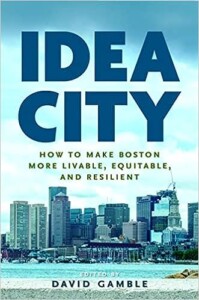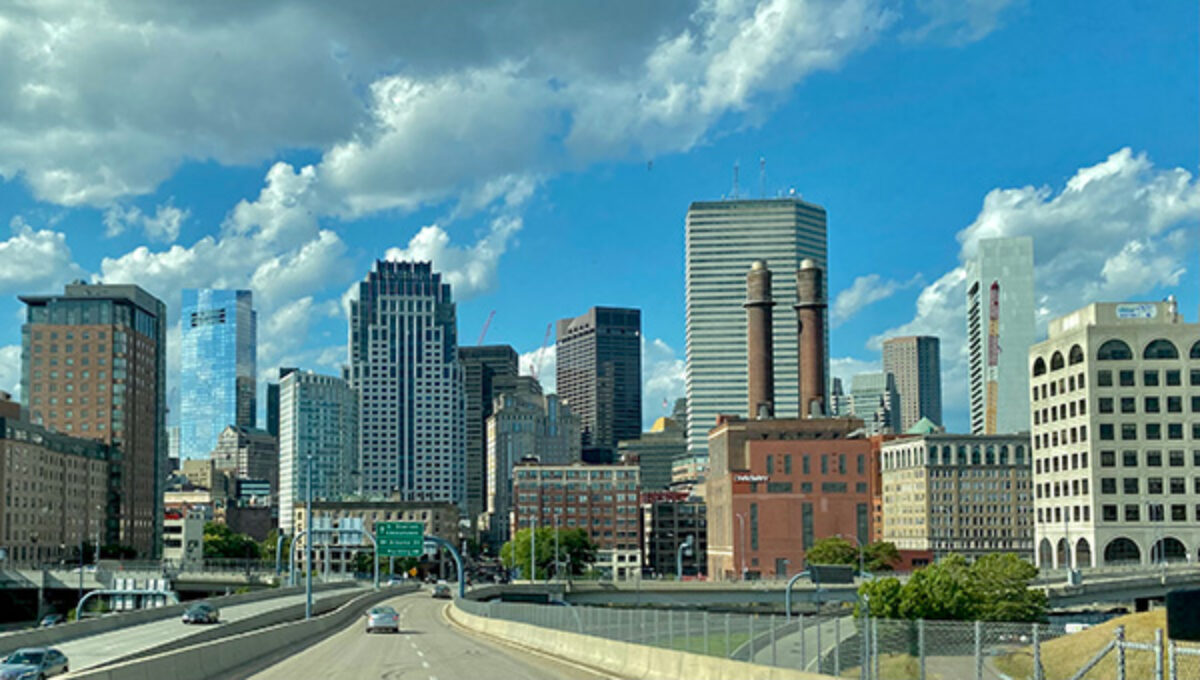The early 20th-century zoning paradigm has outlasted its usefulness for 21st-century cities. Harvard GSD’s Matthew Kiefer argues for a more flexible—and democratic—approach to urban development.
Zoning arose more than a century ago after decades of urban expansion. Zoning rules governed land use—separating heavy industry from housing—and subjected buildings to uniform dimensional standards to help balance competing urban needs. Today, cities in general, and Boston in particular, are very different places: hubs for knowledge and culture instead of manufacturing. Zoning laws once meant to ensure orderly growth for industry while encouraging homeownership are coming into conflict with the need for housing, green development, and other urban imperatives.
Matthew Kiefer, a Lecturer in Real Estate at Harvard Graduate School of Design (GSD), says that Boston is well-positioned to pioneer a more dynamic approach to regulating growth, replacing fixed zoning rules with nuanced development impact review for apartment buildings, labs, hotels, and hospitals. The impact review process, he argues, makes large developments subject to rigorous public oversight rather than the whims of nearby property owners. Kiefer lays out his argument in a chapter of the new book Idea City: How to Make Boston More Equitable, Livable, and Resilient (2023), edited by David Gamble. Kiefer spoke with the GSD about Boston’s urban aspirations, the history of zoning, and the future of socially engaged real estate development.

GSD: Why is reform to the zoning paradigm necessary now?
Matthew Kiefer: After a long late-20th-century decline, cities are reinventing themselves for very different purposes—knowledge, innovation, culture, and entertainment. People expect very different things from cities today. Some, like Boston, are lucky to be growing. But archaic zoning rules impede that growth and prevent its benefits from being shared more broadly.
How would you characterize Boston’s current approach to zoning, and why do you think it’s an obstacle to building an equitable city?
Virtually every US city has comprehensive zoning, with Houston as the famous exception. Boston has been a zoning innovator, but Boston’s innovations have merely adjusted the 100-year-old zoning framework. They’re patches on an overall system that no longer fulfills its intended purposes, if it ever did. Boston has not been able to overcome zoning’s fundamental flaws: inflexible rules that impede urban adaptation and empower self-interested abutters in a way that’s anti-democratic.
Why do you think the basic zoning paradigm doesn’t accomplish its intended purposes?
The basic idea of zoning comes from an effort at the US Commerce Department, just after World War I, to try to harmonize housing—and especially homeownership—with industry. Starting really after the Civil War, cities began exploding as places of manufacturing, abetted by railroads, port facilities, and mechanization. Before the automobile, workers lived near where they worked, which created tremendous land use friction. It’s not good to live next to a slaughterhouse or a foundry.
Those conflicts led the US government to propose what we now call comprehensive zoning. They published a standard state zoning enabling act that many states followed. The zoning paradigm had two components. First: let’s carve a city up into use districts to make sure industrial enterprises don’t get mixed together with single-family houses, and establish uniform dimensional requirements for buildings that serve those uses—height, amount of floor area, setbacks, etc. Second, let’s require any landowner who wants to do something that doesn’t conform to those rules to convince a citizen body, called a board of appeals, to grant a waiver based on proving that the property in question is uniquely disadvantaged by the rules.
That was the basic zoning structure that originated in the 1920s: uniform rules by district and a very high bar to justify any departures. We now have plenty of experience showing that that paradigm does not work in re-urbanizing cities like Boston that grew up before zoning. Zoning has often been used as an instrument of exclusion—a way to restrict newcomers, especially if they’re not like you. Besides that, it’s impossible to devise an after-the-fact set of rules that works in cities that have already been settled for centuries. You might be able to make rules that stick for a new suburb in a corn field, but how do you do that in a quirky, textured city like Boston? Add to that the city needs to adapt—to become more livable, equitable, and resilient. So there’s just no workable set of rules to govern how things get built that doesn’t require many exceptions from those rules.
Why can’t zoning boards simply issue the needed exceptions?
In zoning-speak, they’re called variances. The problem is that, even if you can convince the Board of Appeal to grant the ones you need, any nearby property owner who disagrees with the decision of the board can challenge it in court, and likely win. I argue that the process is anti-democratic. Any significant project in Boston goes through a very public process of vetting its potential impacts on its neighbors. You change your project design in response to what you heard, adopt mitigation measures to lessen impacts, and agree to provide public benefits for the impacts you can’t eliminate before you ask for your variances. By that point, the public has spoken in a very democratic way.
It only takes one abutter, who may be totally self-interested—you’re going to block her view, you’re going to create more traffic on his street—to challenge that public body’s grant of zoning waivers. So, in effect, one self-interested voice cancels the result of a democratic process.
Are there particular types of projects that run up against zoning challenges?
All privately built projects are subject to zoning. Most large projects in Boston need zoning variances. The projects most likely to attract challenges are those that are different in character or larger in scale than what’s around them—especially if surrounding uses are residences.
But not always. In my book chapter, I give an example of a non-profit developer proposing supportive housing for people experiencing chronic homelessness. The developer went through a lengthy process to receive a variance, and a landowner whose property across the street was used as a microbrewery sued to challenge it. He didn’t think the project—designed to serve a population with negligible rates of car ownership—had enough parking. That’s how the current zoning paradigm works: a single business owner could challenge this exemplary project because he thought it would take away street parking from brewery customers.
What are the consequences of these legal challenges for developers working on a project?
A legal challenge to zoning relief can take years to resolve. And often the project sponsor can’t beat the challenge. In order to win, the sponsor has to show unique characteristics of the property that result in the zoning rules not working. That’s hard to do in most cases—the zoning rules don’t work because they just don’t work, not because the property is different.
What’s the alternative? How can you create a more livable city while also addressing the real concerns of neighbors?
Development impact review can take the place of zoning relief. Impact review didn’t exist in 1920, when the current zoning paradigm was framed. It started at the federal level with the National Environmental Policy Act, in 1969. That law was translated into state-level environmental review laws, and then many cities like Boston developed their own impact review ordinances. They’re all based on the same concept: before a public body takes action on a project—grants approval or funding—the project sponsor has to study its potential impacts in a public forum following an iterative process.
The sponsor submits a series of increasingly detailed project reports. At each stage, public agencies, advocacy groups or any member of the public can comment. With help from specialized consultants in different subject areas, the sponsor publishes detailed studies in response to those comments. The studies sometimes demonstrate that the suggested impacts won’t occur, or if they are likely to occur, the studies quantify them and the sponsor proposes measures to mitigate them. Some impacts are unavoidable; 500 housing units next to a transit station will increase demand for transit, and may create shadows on a nearby park at some times of day. So the sponsor proposes public benefits to compensate for the burdens that can’t be eliminated. And eventually you approach consensus that your project merits approval.
As a sponsor, once you get to the end of that process, you’ve put your project out there in public forums. You’ve responded to the concerns you’ve heard in those forums with technical studies and project changes. You’ve entered into a set of binding agreements on mitigation measures and public benefits. The process isn’t perfect—not everyone gets what they want– but it’s very rigorous. It often takes, literally, years. Once you’ve completed it, there’s no reason you should need zoning waivers. If you’ve accounted for your project’s impacts in a very nuanced, project-specific way, what purpose does it serve to judge your project against uniform zoning rules designed to avoid impacts?
So that’s my solution in a nutshell: projects that go through impact review should be deemed to comply with zoning, regardless of whether they conform to the rules. The uniform zoning rules would still apply to homeowners, small business, people doing small, simple things that don’t warrant impact review, but even they could opt in. And, by the way, the rules should be more permissive, especially of multi-family housing, given Boston’s housing shortage.

What changes would need to happen and at what level to implement this kind of reform?
Boston’s zoning enabling statute gives it latitude to do this without going back to the legislature. Development impact review already exists in the Boston zoning code. If the Boston Planning and Development Agency and Zoning Commission were convinced this was a good idea, they could adopt a zoning amendment to put it in place.
What role will urban planners and real estate professionals play in the future growth of cities?
Cities are evolving more rapidly all the time in response to technological advances, social change, environmental imperatives and, lately, a pandemic. So it’s much more important for urban environments to be designed thoughtfully, and for land use to be regulated nimbly. Cities need to accommodate more versatility and adaptability—even some improvisation. The zoning paradigm of having a uniform set of rules that are hard to change and difficult to get relief from is increasingly obsolete given the way cities work today.
In this dynamic environment, real estate development is increasingly recognized as a social endeavor. Most of what gets built in cities is built by private actors—for profit and non-profit developers, hospitals, and universities like Harvard. The things they build affect many people and will hopefully be versatile enough to last a long time. They need to both meet the needs of their sponsors and account for their impacts on others. Development impact review is a key tool for achieving that. So to be successful, real estate professionals have to be social entrepreneurs; that’s why social impact is embedded in the GSD’s new Master in Real Estate Program. Professionals have to understand how to create places that accommodate changing aspirations for how people want to live and work—to be responsive and responsible city-makers.
